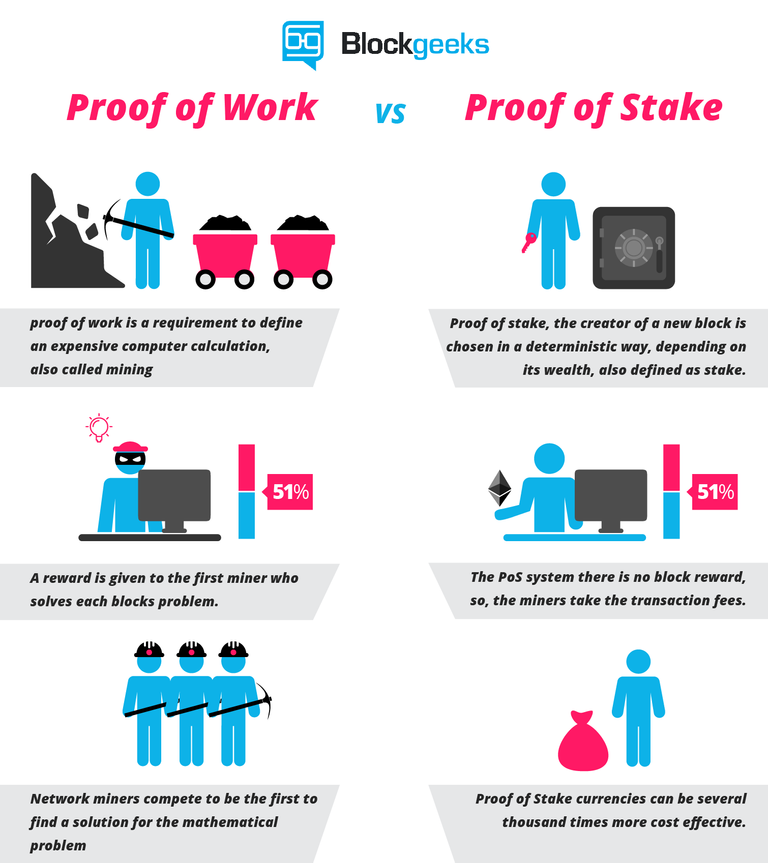Ah.. The great debate...
So you've heard or seen the term PoS or PoW but you have no clue what it means. Today, I'm going to break it down into really easy terms for you to understand what they are and why each are equally important.
Blockchains are secured through methods of nodes proving that transactions occurred on each block. Each block passes these transactions and also generates coins. We have started to see many ways to create blocks and prove/uphold these transactions/ledger.
I will only be discussing Proof of Work and Proof of Stake today.
Proof of Work:
This method involves hardware hashing out a certain algorithm that is constantly evolving and getting harder to solve. This process is called "Mining". As the difficulty rises, this hardware needs to be upgraded or built upon. As you can imagine, this method requires more and more power to sustain. Take Bitcoin for example, a single BTC Asic at the highest current hash rate, requires over 1000w of power. That's a lot of power. Now, just imagine an entire warehouse full of them. Eventually, we will have to make this method more efficient or the cost of power will become too high to sustain these operations. That is the drawback. Let's discuss the incentive. In order to manipulate this network, you would need a 51% hash rate of the entire network itself. In western parts of the world, that kind of hack is unfeasible, due to power costs. It's very possible that the largest pools in the world could come together and try to manipulate the network. However, that scenario is very unlikely. Why would the people profiting from this network seek to destroy it? It just doesn't make sense. That aspect makes this type of network incredibly secure.
Proof of Stake:
This method involves owning coins on the specified PoS network. These coins could have been mined initially during a Proof of Work phase, bought, or given to you. During this method, you're running a wallet client that allows you to make a return on your investment. This process is called "Staking". Essentially, what you are doing is running a node that upholds the ledger similar to mining. There are several different types of Proof of Stake. Some networks have completely randomized node selections. Meaning: if you get selected to generate the following block, you're rewarded based on the amount of coins that are currently attached to your address. Other PoS networks base the selection process on age of the coins attached to the nodes. The incentive of this method is that it requires hardly any power and you can also earn dividends on the amount of coins that are sitting in your wallet. Some blockchain engineers make the claim that Proof of Stake is much more susceptible to a double spend attack. Of course, all of that is pretty much speculative. No one has really accomplished this feat.
I hope this clears up some of the unknowns for those of you newer crypto fans. Check out my website if you have further questions. All of the work I do is posted there.
http://www.cryptomarketinvestments.com/
Cheers,
@clayford08

Image by Blockgeeks
Based on the energy costs alone, I support PoS more. Way too many resources being used on PoW. This is even worse when it's non-renewable energy being used.
complicated stuff, i can't imagine developing my won blockchain
PoS leads to centralization!
How if the selection process is based on age of stake or rng? Just because you own alot of stake doesn't mean you'll get selected to generate the next block. By your logic, PoW could lead to centralization, if all the pools came together. I don't believe either method leads to centralization.